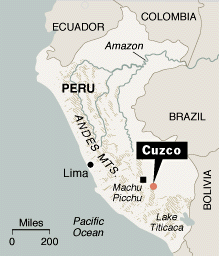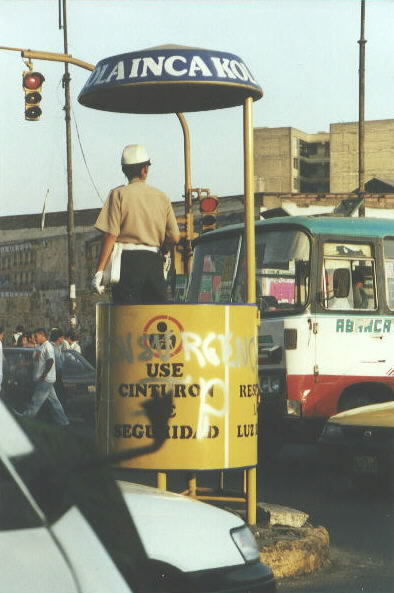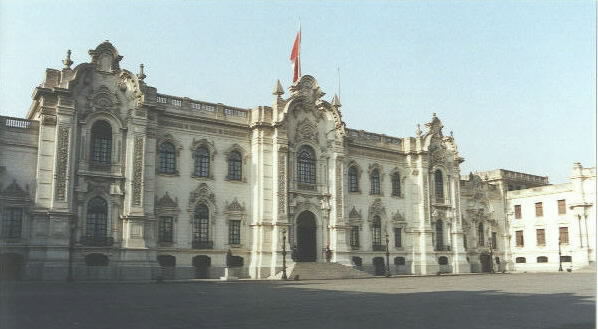Our Trip to Peru
May 12-16, 2000


|
Our Trip to Peru May 12-16, 2000 |
||
| In May, we needed to go to Peru for business, so as long as we were there, we figured we would do some touring. We started with a city tour of Lima, the capital, and then flew to the high mountain city of Cuzco, from which which we took a train to Machu-Picchu. | ||
 |
In Lima, we were immediately struck with how wild the traffic was. The drivers seemed quite aggressive, and since there are many corners with no traffic lights or stop signs, one has to be very careful. Unlike in Chile, the pedestrian isn't treated with as much respect. Busy corners sometimes are controlled by traffic cops, who are fortunate to have the safety of these stands. |
|
| There are many places in Peru to spend money. Some aren't even places, since we were often approached by rather persistant people trying to sell sweaters, bags, artwork and other souvenier items. Even children would approach trying to sell postcards or snacks. We had been warned about the number of beggers, but almost everyone who approached us was actually selling something. | † |
|
|
| † | At the right is the bazaar we passed through at the beginning of our city tour. I couldn't resist buying a teddy bear holding a rose with "Te quiero" (I love you) written across its feet. | ||
|
|
† | ||
| We had spotted the "Indian Market" at the left, on our way from the airport to the hotel, but we didn't actually get to go there until the next day. It was filled with many shops crammed full with all sorts of gift items. Haggling is a way a life here, so if you are shopping in Peru, be sure to offer less than what is asked and see if you can make a deal. There are many wonderful bargains in Peru. | |||
|
† |
† | On our private tour of Lima we got to visit this 80 room house dating from the 1500s, in the time of the conquistadors.
It is the oldest home in the Americas that is still lived in by descendants of the original family. The only reason that we were allowed to go inside is because one of the family members is a part owner of the tour company. The house has withstood earthquakes over the years because it was constructed of bamboo covered with
stucco, and this combination has enough flexibility and strength. Light came into many of the rooms through windows
overlooking either of the two garden courtyards. We were struck by the great age of many buildings in Lima. Although Santiago is from the same period of time, there seem to be fewer buildings that date back as far. Lima has had fewer earthquakes, though, especially in the last century. |
| † |
My favorite room on the tour was this old library, with its display of large handwritten books. We both thought of our brother-in-law, John Spencer, rare book dealer, while in this room! |
|
|
Another of the stops on our city tour was an old monestary. This second floor gallery overlooks a large inner garden courtyard that is quiet and peaceful even though the monestary is in the middle of a bustling old section of the city. Beneath the building were a series of catacombs. There we saw thousands of bones from the skeletons of previous city residents. After an earthquake, these had gotten quite jumbled, so the monks had sorted them into bins by size, and in one round section, they made a design with two circles of skulls and long leg bones. We both felt like we've satisfied our curiosity about catacombs and don't need to see any more.
|
† |
| † |  |
† |
| † | †The president's house in Lima is another "white house." The guards standing at the door reminded us of pictures we have seen of Buckingham Palace. | † |
| Next stop Cuzcoócapital of the Inca world and starting point for tours of Machu-Picchu. | ||